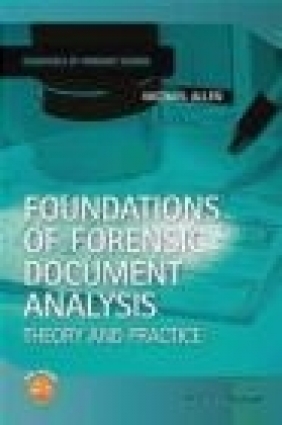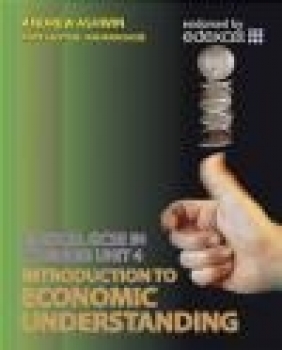Foundations of Forensic Document Analysis
Michael Allen
Foundations of Forensic Document Analysis
Michael Allen
- Producent: John Wiley
- Rok produkcji: 2015
- ISBN: 9781118729939
- Ilość stron: 264
- Oprawa: Miękka
Niedostępna
Opis: Foundations of Forensic Document Analysis - Michael Allen
Forensic document examination is a long established specialty and its practitioners have regularly been shown to have acquired skills that enable them to assist the judicial process. This book, aimed primarily at students studying forensic science and document examination in particular, introduces all of the essential ideas that are to be found in the work of the forensic document examiner in a concise and straightforward way. Each examination type is described not only in terms of its procedural basis but also the science and reasoning that underpins it. The reader will be able to relate the different kinds of interpretation skills used by the document examiner to those used in other forensic disciplines. This book will be an invaluable text for all students taking courses in Forensic Science or related subjects. The book will also be a useful reference for researchers new to this field or practitioners looking for an accessible overview. The author will be adding new references that are relevant as they are published and some more worked examples from time to time. Please visit qdbook.blogspot.co.uk for more details.About the Author xi Series Foreword xiii Preface xv Acknowledgements xix About the Companion Website xxi 1 Introduction 1 1.1 Historical background 1 1.2 Is document examination a science at all? 2 1.3 Quality assurance 6 1.4 Standards in forensic document examination 8 1.5 Competence of forensic practitioners 10 1.6 Cognitive bias 11 1.7 Training to be a forensic document examiner 12 References 13 2 Handwriting Development and Comparison 15 2.1 Introduction 15 2.2 The process of writing 15 2.3 Models of writing production 18 2.4 The learning of handwriting in young children 23 2.5 Handwriting in the adolescent: the origins of individuality 27 2.6 Mature handwriting of the adult 28 2.7 The deterioration of handwriting skill 29 2.8 The forensic analysis of handwriting 32 2.8.1 Specimen handwriting 33 2.8.2 Writing implements 35 2.8.3 Pre-examination review 37 2.8.4 The natural variation of handwriting 38 2.9 Interpretation of handwriting evidence 42 2.9.1 Limitations to the evidence in handwriting cases 42 2.9.2 Reaching conclusions 44 2.9.3 Computer use in interpretation 45 2.10 Examination notes in handwriting cases 47 2.11 Reporting findings 49 Handwriting comparison: a worked example 50 Report of Forensic Expert 56 References 57 3 Signature Examination 63 3.1 Introduction 63 3.2 The development of signatures 65 3.2.1 External influences: alcohol, infirmity and old age 66 3.2.2 Guided hand signatures 67 3.2.3 Signatures in blind people 67 3.3 Simulating signatures 68 3.4 Computer-based recognition of signatures 71 3.5 The forensic examination of signatures 76 3.6 Interpreting findings in signature cases 77 3.7 Note taking in signature cases 81 3.8 Reports in signature cases 81 Signature comparison: a worked example 82 Report of Forensic Expert 86 References 87 4 Documents Produced Using Office Technology 89 4.1 Introduction 89 4.2 Typewriters 90 4.3 The forensic examination of typebar typewriters 96 4.4 Single element typewriters 99 4.5 Typewriter ribbons and correcting typescript 102 4.5.1 Correcting typed documents 103 4.6 Computer printers 105 4.6.1 Impact matrix printers 105 4.6.2 Laser printers 106 4.6.3 The forensic examination of laser printers and laser printed documents 108 4.6.4 Inkjet printers 109 4.6.5 The forensic examination of inkjet printers 110 4.7 Fax (facsimile) machines 111 4.8 Photocopiers 112 4.8.1 The forensic examination of copy documents 113 4.8.2 Composite documents 114 4.8.3 Analysis of toner 114 4.9 Case notes in cases involving typed and copied documents 115 4.10 Reports in cases involving typed and copied documents 117 Typescript comparison: a worked example 118 Report of Forensic Expert 121 References 122 5 The Examination of Printed Documents 123 5.1 Introduction 123 5.2 Some general principles of printing 124 5.2.1 Ink properties 124 5.2.2 Colour management 125 5.2.3 Registration 125 5.2.4 Half tone printing 125 5.2.5 Traditional photographic and modern computer-based processes 127 5.3 Relief printing processes 128 5.3.1 Letterpress 128 5.3.2 Stamp impressions 129 5.4 Planographic printing 131 5.5 Recess printing 132 5.6 Screen printing 133 5.7 Security documents 133 5.7.1 Personalisation of documents 136 5.8 Dry transfer lettering 137 5.9 Key diagnostic features of various printing methods 138 5.10 Case notes in printing cases 138 5.11 Reports in cases involving printing 139 Printing examination: a worked example 140 Report of Forensic Expert 143 References 144 6 Materials Used to Create Documents 145 6.1 Paper 146 6.1.1 Manufacture of paper 147 6.1.2 Additives used in papermaking 148 6.1.3 Paper for security documents 148 6.1.4 Paper products 149 6.2 Ink 151 6.2.1 Pen inks 151 6.2.2 Printing inks 152 6.3 Staples 152 6.4 Adhesives 153 6.5 Miscellaneous materials 153 6.6 Case notes relating to the physical components of a document 154 6.7 Reports relating to the physical components of a document 154 Paper examination: a worked example 155 Report of Forensic Expert 160 References 161 7 Analytical Techniques Used in Document Examination 163 7.1 Chromatography 166 7.1.1 Thin layer chromatography (TLC) 167 7.1.2 High performance liquid chromatography (HPLC) 168 7.1.3 Gas chromatography (GC) 170 7.2 Mass spectrometry (MS) 170 7.3 Spectroscopy 171 7.3.1 Infrared spectroscopy 172 7.3.2 Raman spectroscopy 172 7.3.3 UV-visible (UV-vis) spectroscopy 173 7.4 X-ray fluorescence (XRF) 173 7.5 Electrophoresis 174 7.6 Case notes when scientific equipment is used 174 7.7 Reports in cases where scientific equipment is used 175 Worked example 175 References 175 8 Altered and Tampered Documents 179 8.1 Alterations involving the examination of inks 180 8.1.1 Microscopy of ink lines 181 8.1.2 Optical properties of ink 181 8.1.3 Chemical analysis of inks 183 8.1.4 Where two inks intersect 183 8.2 The examination of paper 183 8.2.1 Torn or shredded paper 184 8.2.2 Marks in paper 185 8.2.3 Punched holes and perforations 186 8.3 The examination of written or machine-generated details 186 8.3.1 Erasures and obliterations 187 8.4 Copy documents 189 8.5 Altering security documents 190 8.6 Case notes in alterations cases 191 8.7 Reports in alterations cases 191 Alterations examination: a worked example 192 Report of Forensic Expert 196 References 197 9 Indented Impressions 199 9.1 Visualising indented impressions 200 9.1.1 Electrostatic method 200 9.1.2 Secondary impressions 203 9.1.3 Determining the sequence of handwriting and impressions 203 9.1.4 Examining multiple-page documents 203 9.1.5 Deciphering electrostatic traces 204 9.2 Oblique light 206 9.3 Case notes in indented impressions cases 207 9.4 Reports in indented impressions cases 208 Impressions examination: a worked example 208 Report of Forensic Expert 210 References 211 10 Dating Documents 213 10.1 Dating handwriting 213 10.2 Dating ink 214 10.3 Dating paper (and other related materials) 218 10.4 Dating typescript and other mechanical processes 219 10.5 Dating pages from a pad or stack of paper 220 10.5.1 Impressions of handwriting 220 10.5.2 Ink transfer 221 10.5.3 Multipage documents 221 10.6 Sequencing 221 10.6.1 Ballpoint ink and ballpoint ink 222 10.6.2 Stamp pad inks and other media 222 10.6.3 Toner and other inks 222 10.7 Miscellaneous factors 223 10.8 Summary 223 10.9 Case notes and reports in cases involving document dating 224 Worked example 224 References 224 11 Duties of The Expert 227 11.1 Note taking 228 11.2 Reports 229 11.2.1 Expressing conclusions 231 11.3 Preparing for court 231 11.4 Giving evidence 234 11.4.1 Giving your evidence 234 11.4.2 Answering questions 234 11.5 Ethics and duties of experts 236 11.5.1 Dealing with clients 236 11.5.2 Cognitive bias 237 11.6 Summary 239 Index 241
Szczegóły: Foundations of Forensic Document Analysis - Michael Allen
Tytuł: Foundations of Forensic Document Analysis
Autor: Michael Allen
Producent: John Wiley
ISBN: 9781118729939
Rok produkcji: 2015
Ilość stron: 264
Oprawa: Miękka
Waga: 0.44 kg






























